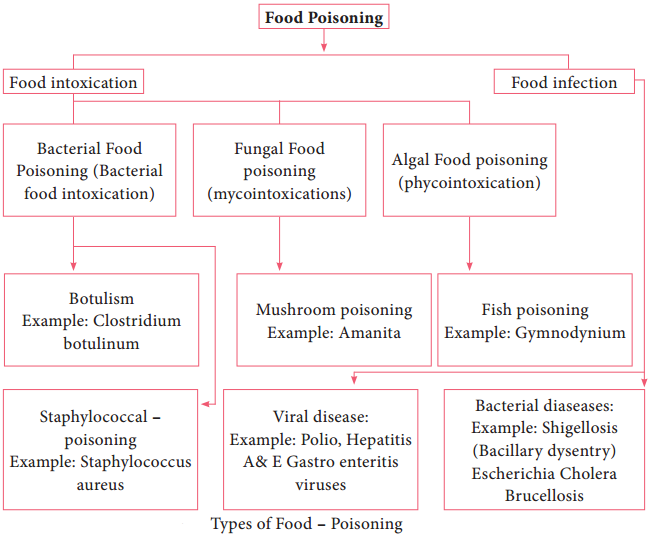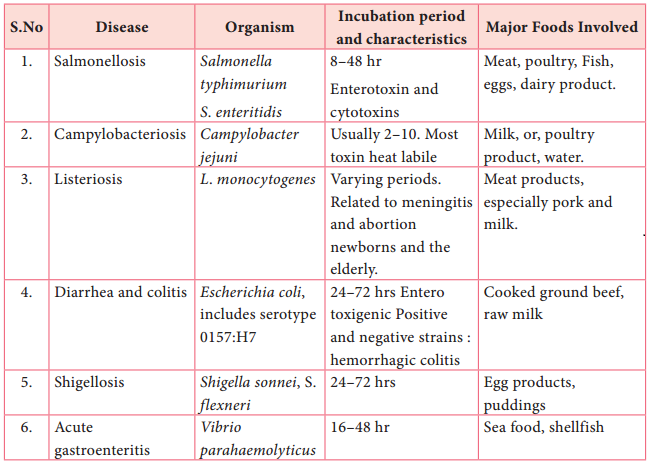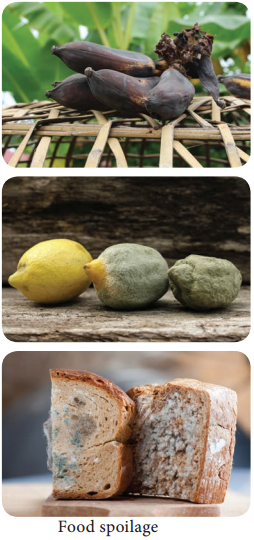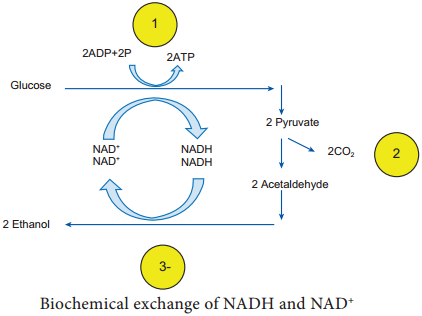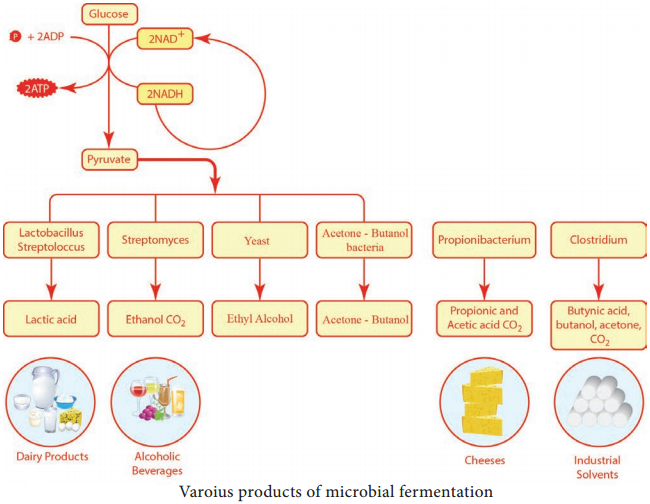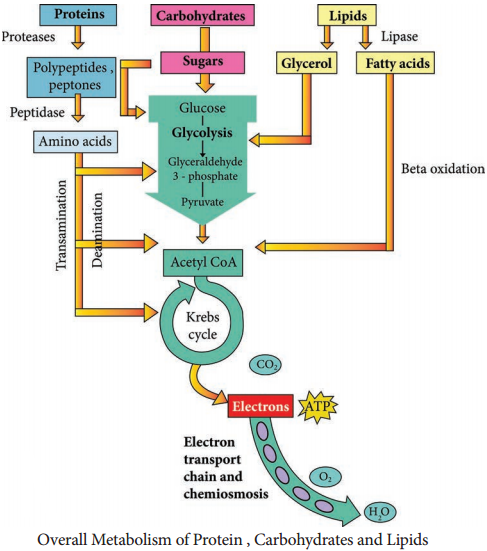Learninsta presents the core concepts of Microbiology with high-quality research papers and topical review articles.
Scope of Food Microbiology
The field of food microbiology is very broad, encompassing the study of microorganisms which have both beneficial and deleterious effects on the quality and safety of raw and processed foods. The primary tool of microbiologists is the ability to identify and quantitate foodborne microorganisms. Microorganisms in food include bacteria, molds, yeasts, algae, viruses, parasitic worms and protozoans.
Microorganisms are associated with the food we eat in a variety of ways. They may influence the quality of our food. Naturally occurring foods such as fruits and vegetables normally contain some microorganisms and may be contaminated with additional organisms during handling and processing.
Food can serve as a medium for the growth of microorganism, and microbial growth may cause the food to undergo decomposition and spoilage.
Food may also carry pathogenic microorganisms which when ingested can cause disease. When food with microorganisms that produce toxic substances is ingested, it results in food poisoning. Some microorganisms are used in the preparation and preservation of food products.
Classification of Foods
Foods may be classified as
a. Fresh foods
These are foods which have not been preserved and not spoiled yet. For example; vegetables, fruits and meat spoil immediately after harvesting or slaughtering.
b. Preserved foods
Foods are preserved by adding salt, sugar, acetic acids and ascorbic acids. Example: Jam, Pickles. In this way their shelf life is improved.
c. Canned foods
In canning, food products are processed and sealed in the air tight containers. It provides longer shelf life ranging from one to five years. Example: Baked beans, Olives.
d. Processed foods
During food processing, original nature of food is changed or altered. It is done by Freezing, Canning, Baking and Drying. Example: Breakfast cereals, Cakes, Biscuits and Bread.
e. Fermented food products
These foods are subjected to fermentation by the action of microorganisms. Example: Kefir, Cheese.
Sources of Microorganism in Food
The primary sources of microorganisms in food include,
- Soil and water
- Plant and plant products
- Food utensils
- Intestinal tract of human and animals
- Food handlers
- Animal hides and skins
- Air and dust
Factors that Influence Growth of Microorganisms in Food
Many factors influence the growth of the microorganisms in food. Some of the factors are intrinsic and some others are extrinsic.
1. Intrinsic factors
The intrinsic factors include pH, moisture content, oxidation – reduction potential, nutrient status, antimicrobial constituents and biological structures.
a. pH:
Every microorganisms has a minimal or maximal, and an optimal pH for its growth. Microbial cells are significantly affected by the pH of food because they apparently have no mechanism for adjusting their internal pH. In general, yeasts and molds are more acid tolerant than bacteria.
Foods with low pH values (below 4.5) are usually not readily spoiled by bacteria and are more susceptible to spoilage by yeast and molds. Most of the microorganisms grow best at pH value around 7.0.
b. Moisture content:
The preservation of food by drying is a direct consequence of removal of moisture, without which microorganisms do not grow. The water requirement of microorganism is defined in terms of the water activity (aw) in the environment. Water activity is defined as the ratio of the water vapour pressure of food substrate to the vapour pressure of pure water at the same temperature.
The water activity of most fresh food is above 0.99. The minimum value of aw for the growth of the microorganisms in foods should be around 0.86.
c. Oxidation reduction (O/R) potential
The oxygen tension or partial pressure of oxygen around a food and the O-R potential or reducing and oxidizing power of the food itself influence the type of organisms which can grow and the changes produced in the food. The O-R potential of the food is determined by,
- The O-R potential of the original food.
- The poisoning capacity (the resistance of the food against change).
d. Nutrient Content
The kinds and proportions of nutrients in the food are all important in determining what organism is most likely to grow. Consideration must be given to (i) foods for energy (ii) foods for growth and (iii) accessory food substances or vitamins which may be necessary for energy or growth.
e. Antimicrobial constituents
The stability of foods against attack by microorganism is due to the presence of certain naturally occurring substances that have been shown to have antimicrobial activity. Some species contain essential oils that possess antimicrobial activity. Among these are allicin in garlic, eugenol in cloves and cinnamon.
2. Extrinsic factors
These include those properties of the storage environment that affect both the foods and microorganisms present in them. Storage temperature, pH, presence and concentration of gases in the environment are some of the extrinsic factors that affect the growth of microorganisms.
